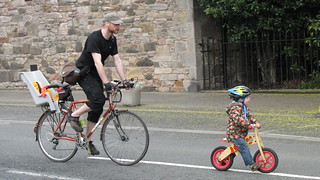About Spokes' November traffic survey.
(WARNING contains rentaquotes.)
Presume Spokes sent in Press Release for 'quiet time of year' - though I thought EN had covered it when last Spokes newsletter came out!
CityCyclingEdinburgh was launched on the 27th of October 2009 as "an experiment".
IT’S TRUE!
CCE is 16years old!
Well done to ALL posters
It soon became useful and entertaining. There are regular posters, people who add useful info occasionally and plenty more who drop by to watch. That's fine. If you want to add news/comments it's easy to register and become a member.
RULES No personal insults. No swearing.

About Spokes' November traffic survey.
(WARNING contains rentaquotes.)
Presume Spokes sent in Press Release for 'quiet time of year' - though I thought EN had covered it when last Spokes newsletter came out!
"
Sensible Tory
12:30 PM on 02/01/2017
If this self-serving interest group of bikers is so convinced there are less cars now, then why do they still keep moaning about too much traffic? If the City Centre loses more people, it will become a (further) run down area and shops will move out for good. These cyclists don't bring business to the City, they DRIVE THEM OUT!
"
does anyone know if the shops are open today? i might cycle in if they are as traffic should be light?
In fairness, that's a very positive article.
However the Spokes count only monitors peak time traffic: mainly commuting and school run trips. We don't know much about non-peak traffic, though Council automatic counter data should tell us a great deal about vehicle numbers and speeds, if not occupancy or vehicle types.
My anecdata from London Road and Easter Road seems to suggest off-peak vehicle traffic is increasing relative to peak-time traffic, at least during the day. Delivery vans, leisure and tourist traffic, some of those home workers mentioned in the article nipping to the shops, etc.
So maybe we need to take a more nuanced view of motor traffic reductions...
There was noticably far less motor traffic in town this morning. If only every bike commute could be like that.
Speaking as an ex-statistician, I'd suggest that the data doesn't justify the conclusion.
10 years is a long time and Edinburgh's changed a lot in that time.
To pick two parts of town, which are fairly close together, and to draw conclusions for the whole city isn't particularly reliable.
Well the official DfT data seems to give a more nuanced picture, and actually shows motor vehicles increasing since a post-crisis dip, but still not qute as many (yet) as at the pre-crisis peak. (Figures are from 2000 to 2015).
According to these stats, we hit 'peak bike' in 2011 and there has since been a rather drastic decline back to the levels of 2003.
Light goods vehicles are the major driver of increased motor traffic, as all other categories have declined slightly since a mid-zeroes peak except light goods vehicles, which are at their highest ever level.
http://www.dft.gov.uk/traffic-counts/area.php?region=Scotland&la=City+of+Edinburgh
One major caveat: all 84 count points in Edinburgh are A roads or even motorways. So the cycling stats may not be representative as many cyclists prefer quitter streets or shared use footpaths where available.
All local authorities in Scotland are listed here:
http://www.dft.gov.uk/traffic-counts/area.php?region=Scotland
As off road cycle facilities improve a decline of traffic on major roads seems likely.
You must log in to post.

 Cycling in Edinburgh Flickr group
Cycling in Edinburgh Flickr group
Video embedded using Easy Video Embed plugin